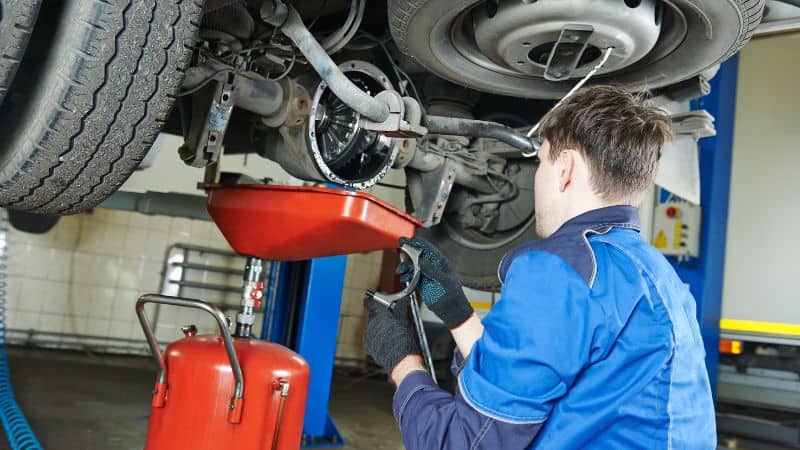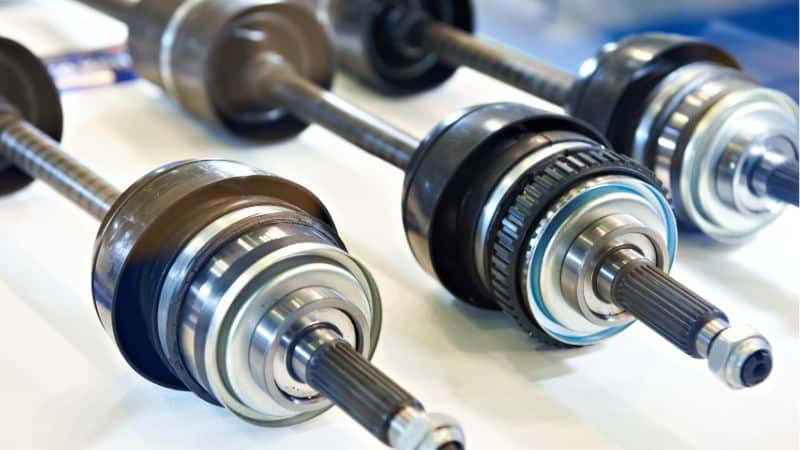Differentials are always subject to severe conditions like extreme heat and high pressure. In fact, they come to work under pressure. However, if axle oil operating temperatures are high, they can cause severe damage. This means that if your axle oil temperatures are more critical than normal, it can damage your equipment.
The average axle temperature is between 140 and 190°F, depending on the axle ratio. A 4.11 gear can run hotter; for towing, axle oil needs to be 200 to 230°F. But you may wonder if the axle oil temperature critical is looking good? Let’s know the facts below:
Axle Oil Temperature Critical, Is It Ok?
No, are you looking for a solution to your axle oil temperature critical freightliner cascadia? Well, to know, you should go to the first thing, and that is you should verify your axle oil. That means you should see whether your drive axle oil level topped off within the operating range. So, check the axle temperature with a digital temperature reader to see if your oil level is good. After checking that, you should confirm its actual problem.
Furthermore, you should check for potential problems with the temperature sensor. If you are sure that your oil level isn’t good and axle oil temperature is critical, you need to fix this problem. Typically, you can take it to your Cascadia dealer for the best work.

Rear Axle Temp Circuit Open Freightliner Cascadia:
The rear axle temperature has to be consistently warmer on your Cascadia. This is because the rear wheels are driven and not the front. The power applied to the drive axle(s) is never 100% efficient. This inefficiency appears as “waste” heat. This ‘waste’ transfers the heat from the rear gears to heat the rear axle housing, hubs, and, ultimately, wheels.
The difference between front-wheel and rear-wheel temperatures can vary depending on many conditions. For example, how fast you’re driving, how heavily loaded you are, how much you’re climbing, etc.
The reason for all of this activity is to look for temperature abnormalities. After making some allowance for the sunny side versus the shady side, the front wheels should be the same temperature. The same is true for the rears, realizing that the backs will be slightly warmer than the fronts. A hand test may be better than some, but a non-contact temperature sensor is much better. After doing this, Just walk around your rig, and you’ll know how many wheels are broken.
Rear Axle Temperature Sensor:
The rear axle temperature sensor is organized to match the function and fit of the specific vehicle’s original sensor. It comes from quality material to ensure the best performance and longer service life. You can easily install it and directly replace it with the actual sensor. Freightliner differential temperature sensors should be a great choice to keep your car running efficiently.
Features:
- Ideal solution – The rear axle temperature sensor is a reliable replacement for a failed sensor with fatigue or electrical faults.
- Reliable Construction – Since it comes from quality materials, it can ensure durable performance and long-term benefits.
- Confirm Fit – To ensure this part fits your exact vehicle, input your make, model, and trim level into the garage tool.
What Causes Semi Truck Differential Overheating:
Knowing what causes a rear differential overheating will help you avoid any mistakes. And also to understand the causes, hopefully helping you avoid breaking your differential. However, the main reason for differential overheating can depend on the driving style of a new car. In the’ break-in period,’ putting too much pressure on your engine can cause front or back axle noise. Additionally, this noise indicates that there is a big problem.
By overstressing a new vehicle, we mean driving fast for longer or towing another object. Actually, this can cause your semi truck differential overheating and begin to break down. In other words, if you are allowing your car to spin too much, it can cause severe problems with your differential.
It shouldn’t hurt too much to spin out every once in a while unintentionally. But the scenario where your front wheel is on the road while your rear wheel goes out will cause damage. This type of driving technique can crack or damage your differential parts.
Semi Truck Differential Temperature:
The temperature depends on oil specification and, more importantly, temperature accuracy. The OEM’s fluid allows you to set the temperature of their product in a sump in the middle. Differential skin temperature taken with an IR gun does not accurately indicate actual fluid temperature. It’s because you need to know the location of the emissivity and limit and surface temperature to learn the correct measurement.
Generally, above 100F ambient is a good average, but it’s liquid, not skin. So, it needs to have correlated factors to be accurate. But if you want to use these numbers, you should make sure they are correct before using them. Though the normal temperature
Above all, temperatures up to 260° F (126 C) should be acceptable. If it’s 290 F(143 C) or higher, it’s really worrying because a bearing or two or three might fail. Don’t get to worry about the lower temperature in your differential. The reason is that in this situation, you should use low viscosity.
Nonetheless, once broken in, the average operating temperature for a differential in stock trim and regular diving is 170° to 220°. Normal vehicle operating temperature is 200° to 250° with oversized tires, undersize differentials, or when towing.

FAQ (Frequently Asked Questions):
Q. What is the normal operating temperature of a rear differential?
The normal operating temperature of a differential is 175° to 250°, depending on your driving style. You can use a handheld infrared digital thermometer to get a more accurate temperature rating. A run of 250° to 275° is normal for new differentials during the break-in period. For the first 500 miles, don’t drive or travel long roads as this creates excess heat. At 300°, the difference is considered too hot and should be allowed to cool. Remember, breaking in a new gear needs an oil change at 500 miles.
Q. What is the normal drive axle temperature?
The normal drive axle temperature range is typically 160 to 250°. But if it is significant from this range, it’s called abnormal temperature, which is not suitable for your axle.
Q. What is the operating temperature of an axle?
A temperature between 140 °F and 175°F is considered normal. In particular, you should be highly cautious when determining hub temperature. Normal bearing operation temperatures may cause the hub to become too hot and can’t touch comfortably.
Final Word:
“Axle Oil Temperature Critical” is a warning message indicating that a vehicle’s axle oil temperature has reached a critical level. That means you need to give immediate attention. This warning is usually displayed on the vehicle’s instrument panel or dashboard. Most importantly, it works to alert the driver to potential problems with the axle system. It’s because if they don’t address it immediately, it could cause damage or failure of your differential. Finally, we are tired of giving the best information in this blog. We hope you will benefit.
Read Also: What Should Forward Rear Drive Axle Temperature Be At?


